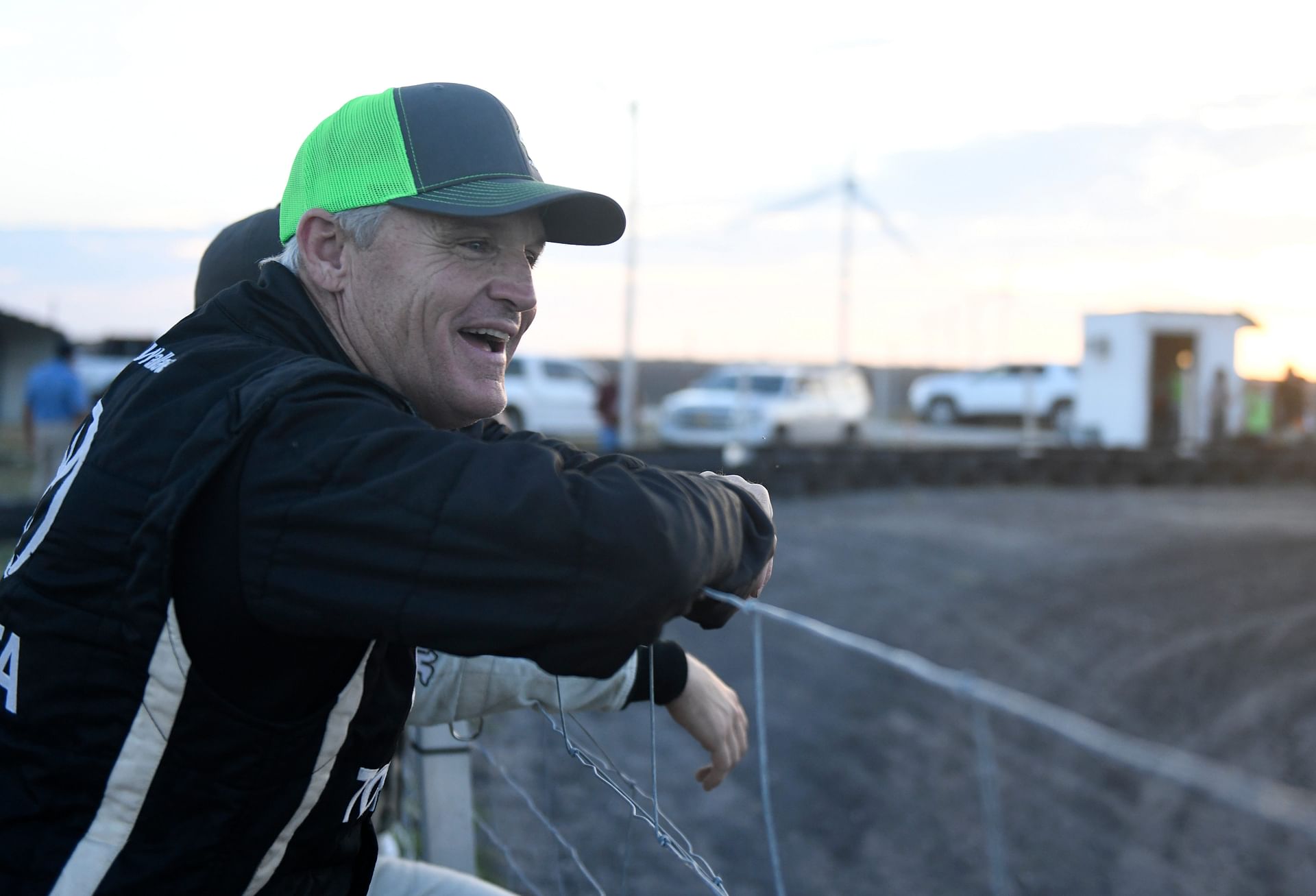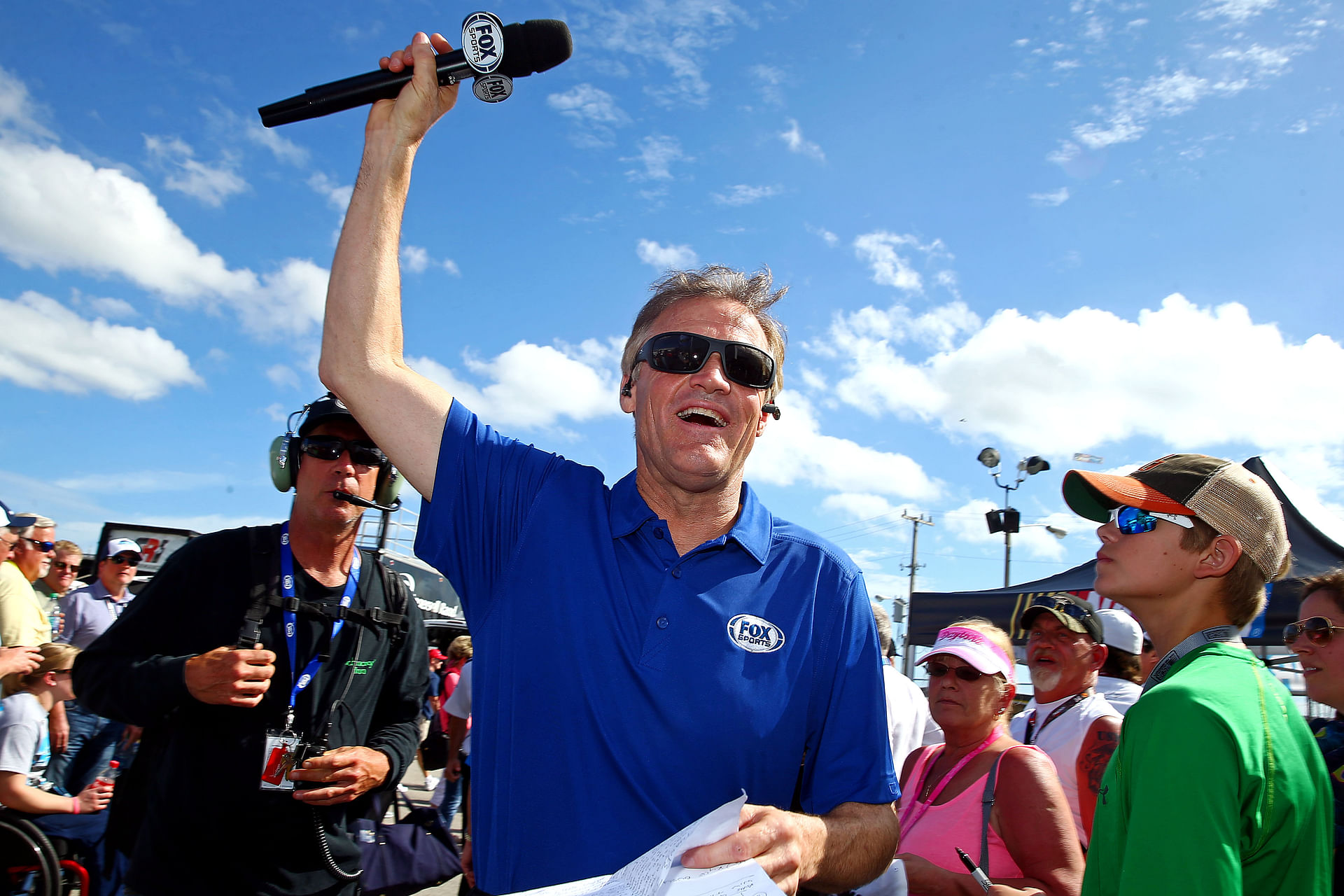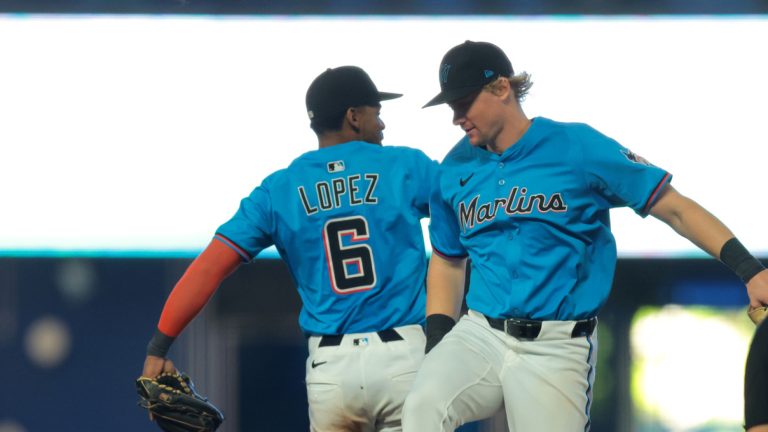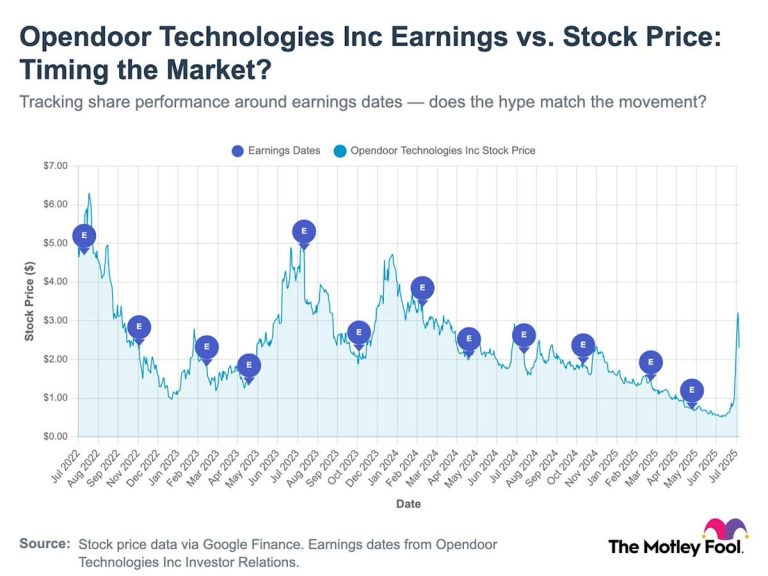For nearly three decades, Kenny Wallace’s relationship with NASCAR was defined by a relentless fight to keep going. But as the sport grew more commercial and sponsorship became harder to secure, Wallace found himself emotionally and financially spent.
Wallace opened up about that difficult decision on his latest Kenny Conversation, marking the 10th anniversary of that farewell race. As fans across social media paid tribute to his legacy, Wallace laid bare the financial toll behind the decision.
“Let me tell you the day (and) the moment that I decided to quit NASCAR… I realized I’d forgotten that Kim and I have money. We’re plenty good. But what I was doing, I was living my life in NASCAR through sponsorship. I felt like if I did not have a sponsorship to give the team the money. I was actually the one, supporting the teams. I was the one making the payroll, because I’d get the money and then I’d give it to the team and I grew exhausted,” Kenny Wallace said. (8:45 onwards)
Kenny Wallace‘s reflection reveals a truth that many former drivers have echoed. The sponsor-first model of stock car racing had become unsustainable for mid-tier veterans. For years, Wallace operated less like a full-time racer and more like a full-time salesman, raising funds, paying mechanics, and keeping team operations afloat. And in doing so, he drifted further from what originally pulled him to the racetrack.
Wallace’s NASCAR journey officially began in 1988. A fan favorite due to his charming and raw authenticity, he ran 344 Cup Series races across a 27-year career. While Wallace never won at the Cup level, he carved out a respectable resume. He posted 27 top-10 finishes. His last full-time Cup season came in 2003 with Bill Davis Racing, but he remained active on a part-time basis through 2008.
That transient phase of making 44 starts over the next five years for six different outfits captured the reality that many aging drivers faced in the mid-2000s.
“I’ve never looked back. And I’ve never been happier because I got so tired of trying to find money to support that damn race car and that team and all the payroll and the families. I’m living my best life now,” he added. (11:10 onwards)
It was in the Xfinity Series where Wallace left his biggest mark. He scored nine wins and finished in the top ten 173 times over 547 races. His closest run to championship glory came in 1991 when he finished second in the standings, 74 points behind Bobby Labonte.
“You can call me”: Kenny Wallace offers to help NASCAR reconnect with blue-collar fans amid identity reset


As Kenny Wallace reflected on the past, he also turned an eye toward the sport’s future and its struggle to define itself. Over the past decade, NASCAR has expanded its digital footprint, dabbled in new formats, and moved away from ovals, adding street courses, most notably in Chicago (2023) and Mexico (2025).
The sport’s move to streaming services like Amazon Prime has attracted younger audiences, but many longtime fans feel left behind by a sport they once called their own. Wallace didn’t mince words about the current state of affairs.
“NASCAR is looking for a firm that can connect them with the blue-collar fans, the old people… I raised my hand and said, ‘hell you can call me. I’ll help you’. NASCAR is looking for a firm to help them professionally engage, create a plan on how to reconnect with all the people they pissed off,” Kenny Wallace said (2:53 onwards)
While NASCAR’s digital transition has broadened its reach, it has also created a generational divide. According to recent data from BlackBook Motorsport, 73% of the sport’s digital streaming audience is under 34. NASCAR’s own figures show that viewership among the 18–34 age group jumped 29% during the Sonoma Cup Series event on TNT, clear signs that the sport is resonating with a new demographic.
But as Kenny Wallace reminds, that evolution shouldn’t come at the cost of abandoning those who built the sport. And if NASCAR wants someone to bridge the gap between its past and future, he’s more than willing to pick up the phone.
But the tide may be turning. The All-Star Race is expected to return to North Wilkesboro in 2026 for its fourth consecutive edition at the venue. And in a major announcement, NASCAR revealed it will return to the historic Bowman Gray Stadium in 2026 as the sport leans heavily back to its Southern roots.
Edited by Tushar Bahl






